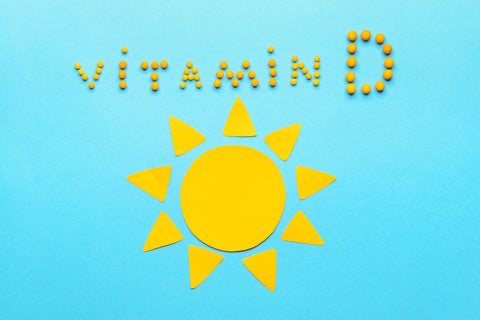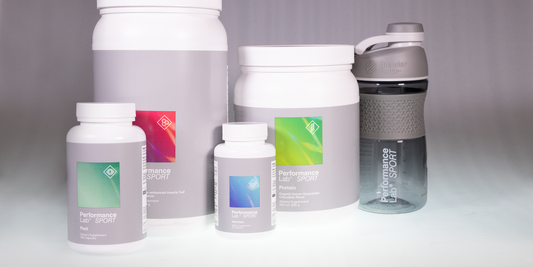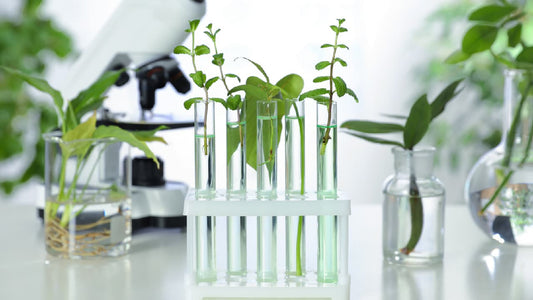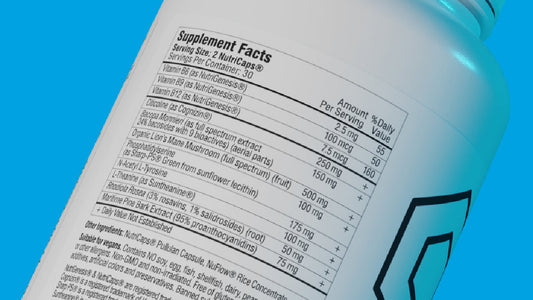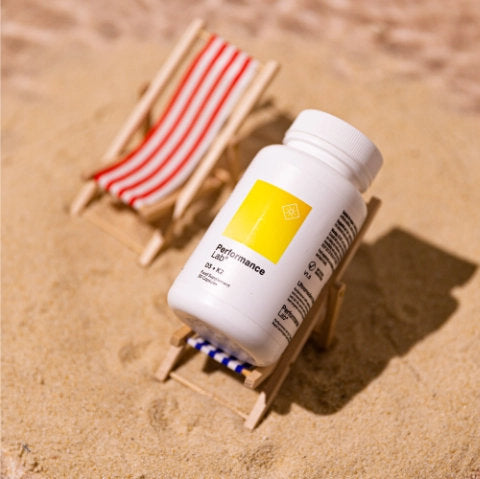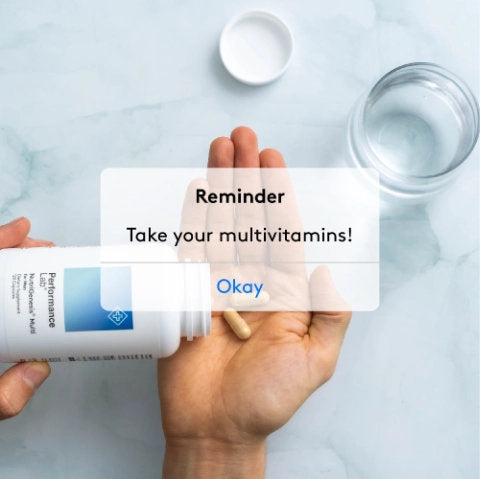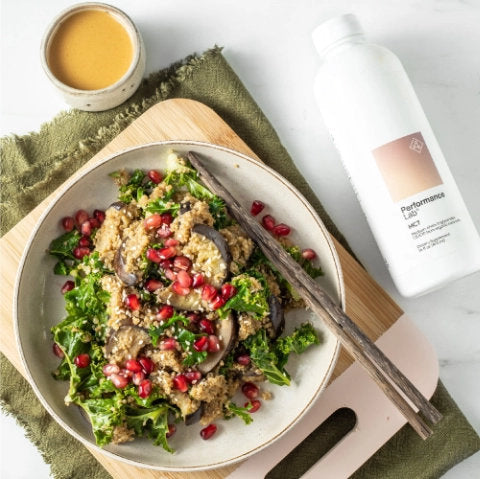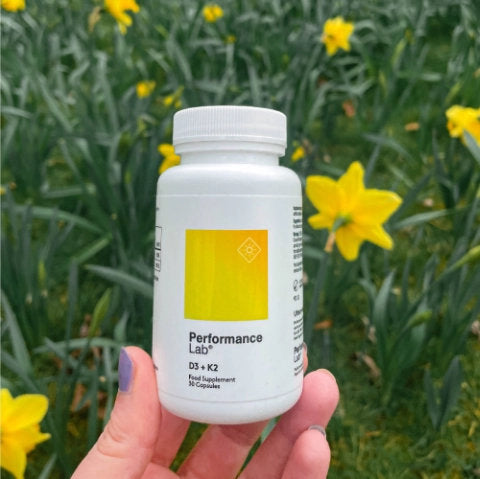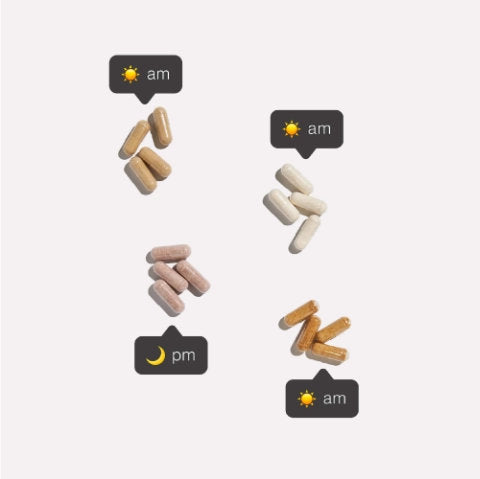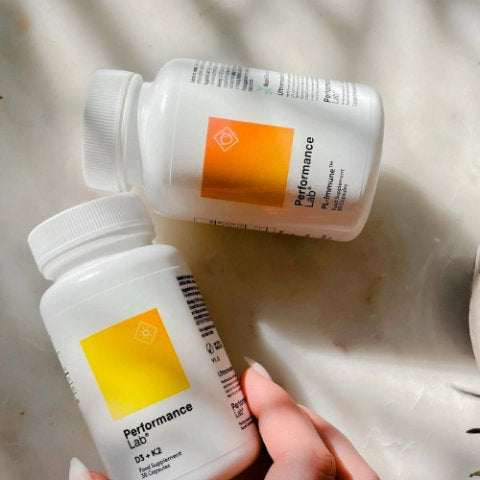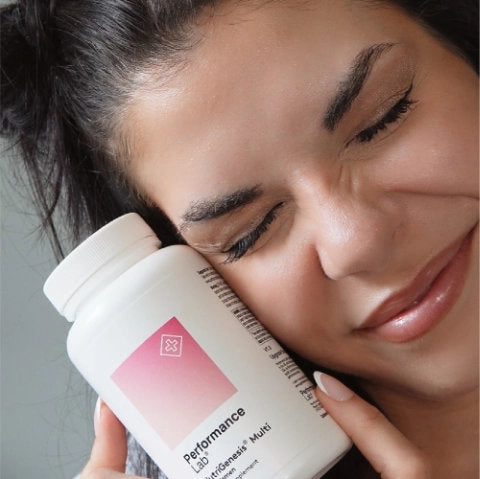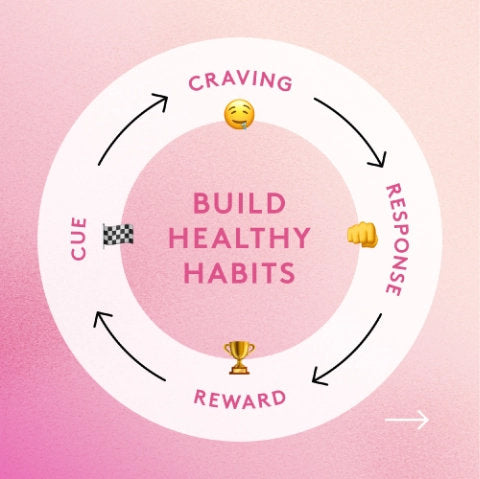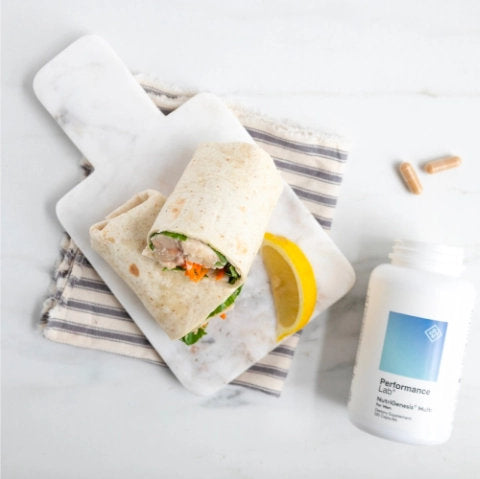Why do we need vitamin D?
One of the primary functions of vitamin D is to regulate calcium and phosphorus levels in the body. Vitamin D's unique interaction with our body makes it fundamental to the health of our bones. Calcium is essential for bone upkeep and needs vitamin D to be effectively absorbed.
 Insufficient vitamin D in your body restricts the calcium absorption, leading to weakened bones. It also plays a role in supporting the immune system, helping to fight off infections and diseases. Research suggests Vitamin D plays a role in maintaining good muscle function and is crucial for mitochondrial oxidative phosphorylation capacity, an important driver of muscle regeneration.
Insufficient vitamin D in your body restricts the calcium absorption, leading to weakened bones. It also plays a role in supporting the immune system, helping to fight off infections and diseases. Research suggests Vitamin D plays a role in maintaining good muscle function and is crucial for mitochondrial oxidative phosphorylation capacity, an important driver of muscle regeneration.
How do I know if I’m not getting enough vitamin D?
Other than requesting a blood test from your doctor, signs that you may not be getting enough vitamin D are:- Fatigue
- Not sleeping well
- Getting sick more easily
- Bone aches and muscle aches
- Hair loss
- Muscle weakness
How do we get vitamin D?
Sunlight

Your body produces vitamin D naturally when your skin is directly exposed to sunlight, particularly ultraviolet B rays. However, factors such as the time of day, geographic location, season, skin pigmentation, age, and use of sunscreen can affect the amount of vitamin D your body produces.
Food

Certain foods contain vitamin D. Fatty fish like salmon, mackerel, and tuna are among the best sources. Other sources include beef liver, cheese, egg yolks, and certain types of mushrooms. Some foods are also fortified with vitamin D, such as milk, orange juice, and breakfast cereals.
Supplements
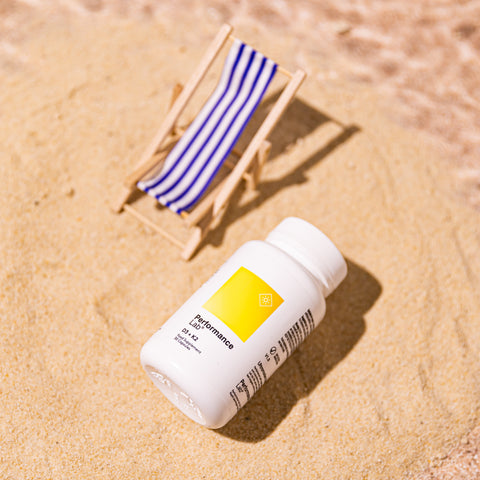
Vitamin D supplements can be a good way to ensure you're getting enough, especially if you live in a place with limited sunlight, have darker skin, are older, or have certain medical conditions that affect Vitamin D absorption.With a few questions flying about surrounding Vitamin D - let’s debunk some myths we’ve heard along the way.
Myth 1: Adequate Vitamin D Levels Eliminate the Need for Supplementation
You’ve been for your blood test, you’ve got adequate levels - you’ve smashed it.
No need to supplement - right?
Firstly, who wants to be "adequately" healthy? It’s the equivalent of getting a C- on a test…could do better.
Adequate vitamin D levels mean you may not need a supplement in the short term. But maintaining the optimum level long-term, means keeping on top of continuously changing factors. Regular sunlight exposure, dietary intake, and overall health status all play a role in determining what ‘adequate’ looks like.
In addition, the definition of "adequate" vitamin D levels can vary among different health organizations and individuals.
So while it's true that adequate vitamin D levels might mean no supplementation is needed at that moment, it doesn't mean that supplementation won't be needed in the future, or that everyone with adequate levels will never need a supplement.
Myth 2: Sunlight is Sufficient for Obtaining Vitamin D
You may think once the sun’s out, all that’s left to do is find the right spot, sit back, and soak it up - but it’s not quite as straightforward as that. It’s a common misconception that sunlight alone can provide adequate levels of vitamin D. While sunlight exposure does trigger vitamin D production in the body, several factors can limit its effectiveness, especially in certain geographical locations and during specific seasons.The UVB rays from the sun are responsible for stimulating vitamin D production in the skin. However, in the northern hemisphere, between October and April, the sun's rays are not strong enough to produce sufficient amounts of vitamin D, even on sunny days. And when it is sunny enough, most of us are reaching for the sunscreen - a smart move but it does hinder the absorption of UVB rays and limit vitamin D synthesis.Additionally, people with darker skin pigmentation require more prolonged exposure to sunlight to produce the same amount of vitamin D as those with fairer skin. Modern lifestyles, such as spending most of the day indoors, air pollution, or wearing clothing that covers most of the body, all reduce the opportunity for sunlight exposure.
Myth 3: Food Alone Provides Enough Vitamin D
While certain foods contain vitamin D, relying solely on diet to maintain sufficient levels can be a challenge. Oily fish, such as salmon and mackerel, egg yolks and liver are good sources of vitamin D. But the top 10 best foods for vitamin D are all of animal origin. Our intake of vitamin D through animals relies heavily on their vitamin D levels. Wild fish, for example, generally contains higher levels of vitamin D compared to farmed fish. The quantity of vitamin D in a single portion of fish can vary significantly depending on its origin.
If you’re relying on a plant-based diet, there’s only one natural source - mushrooms. They can synthesize vitamin D2 when exposed to UV light, however, D2 may not be as effective as D3 at boosting serum levels. Fortified foods like cereals, milk, and orange juice, are also good vegan sources of vitamin D.While fortified foods can contribute to increasing vitamin D intake, relying solely on them may not provide the necessary daily requirement.
Myth 4: Only ‘At-Risk’ Groups Need to Supplement
Traditionally, vitamin D supplementation was recommended primarily for specific population groups considered at higher risk of deficiency. These include infants and children under 5 years of age, pregnant and breastfeeding mothers, people over the age of 65, individuals with limited sun exposure, and those with darker skin pigmentation.
Vitamin D deficiency affects 41.6% of Americans.In the UK recent research from Public Health England highlights the need for vitamin D supplementation for the general population. Especially during the winter months. Studies have shown that even during the summer, many individuals do not reach sufficient vitamin D levels to maintain adequacy throughout the winter.
Myth 5: All Vitamin D supplements are the same
There are two forms of vitamin D available:
Vitamin D2
D2 (ergocalciferol) is found in yeast and fungi. It's produced when ultraviolet light hits a type of compound called ergosterol, which is found in certain fungi and yeasts.
Vitamin D3
D3 (cholecalciferol) comes from animals and humans. This is the type of Vitamin D that your skin makes when it's exposed to sunlight.
Which one is better?
Both will contribute to serum levels but D3 is more readily converted to 25-hydroxyvitamin D, the more physiologically active vitamin D. D3 form is 87% more potent than the D2 vitamin found in many other vegan supplements and fortified food - so if you’re looking for a supplement, search out the supplements with D3.
What’s the best vitamin D supplement?
There’s lots of vitamin D available, so to check you’re getting the best, look out for the following:Check the source of D3:Some D3 supplements use lanolin, from sheep’s wool as a source. Preferably look for supplements with vitamin D3 from a 100% plant source. This not only makes them suitable for vegans but also reduces the carbon footprint of the production process. The algae is lab grown in controlled conditions with minimal environmental impact. No pesticides or harsh solvents are required and any excess algae can be reused in the next round of algae growth, making a more sustainable supplement.
Check the form of D3:Absorption is key, so look for a mention of vitamin D3 is in liposomal form. This means it’s encapsulated in a fat-soluble lipid layer that significantly helps the absorption of the D3 by the body. Liposomal D3 has been shown to produce a rapid increase in plasma vitamin D - unlike some standard formulations.Check the dosage:Google will tell you that adequate levels of D3 are around 400IU/10mcg per day. There’s research to indicate this may be too low. Particularly in areas with minimal sunlight or for those that spend a lot of time indoors. Look for a dosage of 1000IU/25mcg per day which is a safer upgrade on ‘adequate’. Check the credentials:As with any supplement, look for third party testing: Has the product been tested by a company that was not involved in the production or sale of the supplement. Products that have been third-party certified will have a certification stamp displayed on the label from the certification company.Clean label: Clean Label products only use ingredients of unparalleled purity. These supplements are non-GMO, non irradiated, vegan friendly, gluten free and free from artificial colors and preservatives.
Can I stack vitamin D?
If you’re looking to ace your bone health, stack your D3 with vitamin K2. K2 is another fat soluble vitamin that’s used by the body for building strong bones and promoting heart health. These two work synergistically to promote overall health, particularly bone and cardiovascular health. Vitamin D enables the body to properly absorb and utilize calcium, whilst K2 makes sure that calcium is directed exactly where it’s needed - i.e straight to the bones and teeth rather than accumulating in soft tissue such as the arteries.
Final thoughts
If you’re relying on sunshine and diet alone. You’re probably not getting all the vitamin D you’ll need. Especially if you follow a plant based diet. If you’re experiencing any of the symptoms mentioned, it may be worth checking with your doctor and getting a blood test to see if you’re deficient.If you’re not experiencing these symptoms but are aiming for optimal over adequate health, then it’s worth looking into supplementation. A multivitamin that contains D & K is a smart way to go. Or a supplement stack that provides both of these combined will offer you bone and cardiovascular support.
Look out for dosages when choosing your supplement. A daily supplement with anything between 10-15mcg will be 'adequate' for your needs. But if you're looking to Upgrade Yourself, choose one with or 25mcg for optimal nutrition.
